History of US Mint: A Comprehensive Guide from Founding to Present Day
The United States Mint, often simply called the U.S. Mint, stands as a cornerstone of American economic history and numismatics. Established in the nation’s infancy, it has evolved from a single facility producing basic coinage to a multifaceted institution responsible...

The United States Mint, often simply called the U.S. Mint, stands as a cornerstone of American economic history and numismatics. Established in the nation’s infancy, it has evolved from a single facility producing basic coinage to a multifaceted institution responsible for circulating coins, bullion products, commemorative issues, and even safeguarding national treasures like gold reserves at Fort Knox. As an independent agency of the Department of the Treasury established in 1799, the Mint operates with organizational independence in coin production and bullion storage, with facilities across the country and abroad. This definitive article traces the history of U.S. Mint’s journey from its 1792 founding through key expansions, legislative milestones, technological advancements, and modern challenges up to 2025. Drawing on official records, timelines, and recent developments, we explore how the Mint has adapted to wars, economic shifts, and cultural changes while maintaining its mission to produce reliable currency for the American people.
Whether you’re a coin collector, history enthusiast, or student of economics, this in-depth exploration covers the U.S. Mint’s directors, branches, major coin programs, and ongoing innovations. Let’s delve into the rich tapestry of the United States Mint’s history.
Introduction to the United States Mint

The United States Mint is the official bureau of the Department of the Treasury charged with producing the nation’s coinage for trade, commerce, and collectors. Since its founding in 1792, the Mint has played a pivotal role in shaping the economic landscape of the United States. The first mint, known as the Philadelphia Mint, set the standard for American coinage and remains a cornerstone of the Mint’s operations today.
Over the centuries, the United States Mint has expanded to include several major facilities, each with its own unique history and contributions. The Philadelphia Mint continues to serve as the primary hub for coin production and innovation. The Denver Mint, established in the early 20th century, is renowned for its high-volume output of circulating coins. The San Francisco Mint, originally opened during the Gold Rush era, is now best known for its proof and commemorative coins, while the West Point Mint specializes in bullion and high-value coinage, including gold and silver coins.
The Mint’s mission extends beyond simply producing coins. It is dedicated to creating high-quality circulating coins, commemorative coins, and bullion products that reflect the nation’s heritage and values. Through its diverse programs and facilities, the United States Mint ensures that Americans have access to reliable currency while also celebrating the country’s rich history and culture.
8 Interesting Facts About the U.S. Mint
The U.S. Mint is full of intriguing stories and quirks that go beyond its role in producing currency. Here are eight lesser-known facts, including the important role of the assay office, that highlight its unique history, operations, and oddities—perfect for trivia enthusiasts and collectors alike.
-
The U.S. Mint Was the First Federally Funded Building: Authorized by the Coinage Act of 1792, the original Philadelphia Mint holds the distinction of being the first building constructed under the new U.S. Constitution with federal funds, predating icons like the White House or Capitol. Construction began on the building shortly after the act was passed in 1792.
-
Early Security Relied on a Guard Dog Named Nero: In 1793, the Mint purchased a watchdog named Nero for just $3 to patrol the grounds. He accompanied night watchmen on hourly rounds and was fed only by them to ensure his loyalty and ferocity against intruders.
-
Peter the Eagle: The Mint’s Feathered Mascot: A wild bald eagle named Peter became an unofficial pet at the Philadelphia Mint in the 1830s, freely roaming the facility. Tragically, he died after tangling with a coin press; his taxidermied body is still on display at the current Mint.
-
Horsepower Literally Powered Early Coin Production: Before steam engines arrived in the 1830s, horses and oxen turned massive wheels to operate the Mint’s presses, striking coins in a process that gave new meaning to the term “horsepower.”
-
No Tours Allowed on Rainy Days: According to 1825 regulations, visitors could tour the Mint on working days except Saturdays—and rainy days, likely to avoid tracking mud into the facility or disrupting operations.
-
The First Batch of Coins Totaled Just $111.78: In March 1793, the Mint’s inaugural production run consisted of 11,178 large copper cents, amounting to a modest $111.78 in value— a far cry from today’s billions.
-
Coin Ridges Were Anti-Shaving Measures: Edges on coins like quarters (119 ridges) and dimes (118 ridges) were originally added to prevent criminals from filing off precious metals like gold or silver, a practice that persists today for tradition. The obverse of a coin, which is the front side, typically displays the date and mint mark.
-
The Two-Cent Coin Debuted “In God We Trust”: Minted from 1864 to 1873, the short-lived two-cent piece was the first U.S. coin to feature the motto “In God We Trust,” inspired by Civil War-era sentiments and later adopted nationwide.
Founding and Early Years (1792–1830s): Establishing a National Currency

The story of the U.S. Mint begins in the turbulent post-Revolutionary War era, when the young United States grappled with a chaotic monetary system reliant on foreign coins and state-issued currencies. To unify the nation’s economy and assert financial independence, Congress passed the Coinage Act on April 2, 1792, officially establishing the first national mint in Philadelphia, then the capital. President Washington played a crucial role by approving and supporting the establishment of the Mint, ensuring its construction and operation during his presidency. This act, also known as the Mint Act, authorized the production of gold, silver, and copper coins based on a decimal system—a revolutionary concept championed by figures like Alexander Hamilton and Thomas Jefferson.
President George Washington appointed David Rittenhouse, a renowned astronomer and inventor, as the first Director of the Mint. Alongside the Director, the chief coiner was a key official responsible for overseeing coin manufacturing operations; Henry Voigt served as the first chief coiner, playing a vital role in the Mint's early years. Operations began modestly in a converted building on Seventh Street in Philadelphia, with the first coins—copper cents and half cents—struck in 1793. Early challenges included equipment shortages, metal supply issues, and the yellow fever epidemic of 1793, which halted production. The Mint's initial coinage production was limited in scale, but by 1794, silver dollars and half dollars entered circulation, followed by gold eagles in 1795.
Key milestones in this period include:
-
1795: Elias Boudinot succeeds Rittenhouse as the second Director, serving until 1805.
-
1799: Construction of the first purpose-built Mint facility in Philadelphia, which served as headquarters until 1833.
-
1800s–1820s: Under Directors like Robert Patterson (1806–1824) and Samuel Moore (1824–1835), the Mint introduced steam-powered presses, improving efficiency amid growing demand.
Legislation like the Coinage Act of 1792 set the stage for bimetallism (gold and silver standards), but fluctuations in metal values led to hoarding and melting of coins, prompting adjustments in subsequent acts.
Early History and First Coins

The early years of the United States Mint were marked by innovation and determination as the young nation sought to establish its own monetary system. The Coinage Act of 1792 laid the foundation for the Mint, authorizing the production of copper, silver, and gold coins and setting precise standards for their weight and purity. This legislation not only created the United States Mint but also established the dollar as the country’s standard unit of currency.
The first coins struck by the Mint in 1793 were the copper Fugio cent and the half cent, both produced at the original Philadelphia Mint facility. These early coins were crafted using hand-operated presses, with each coin individually stamped—a labor-intensive process that reflected the craftsmanship of the era. By 1795, the Mint had expanded its operations to include the first gold and silver coins, such as the gold eagle and the silver dollar, marking a significant milestone in American coinage.
The Philadelphia Mint, as the nation’s first mint facility, quickly became a symbol of the country’s commitment to financial independence. Its early coins, including the cent, half cent, and dollar, set the standard for future issues and helped establish trust in the new nation’s currency. The legacy of these first coins and the pioneering spirit of the Mint continue to influence American coinage to this day.
Expansion and Branch Mints (1830s–1900): Gold Rushes and National Growth

As America expanded westward, the discovery of gold and silver deposits necessitated new Mint facilities to handle regional needs. The Philadelphia Mint could no longer suffice alone, leading to a period of rapid growth.
In 1835, Congress authorized branch mints in Charlotte, North Carolina (the Charlotte Mint, notable for its gold coin production); Dahlonega, Georgia; and New Orleans, Louisiana (the New Orleans Mint). The Charlotte Mint played a key role in minting gold coinage from local gold deposits, while the New Orleans Mint—also known as the Orleans Mint—gained significance during the Civil War and became renowned for producing rare coins. These branches introduced mint marks (C, D, O) to identify origin, a practice still used today.
The California Gold Rush of 1848 supercharged expansion. The San Francisco Mint opened in 1854 to handle the influx of West Coast gold, quickly becoming a vital hub. During the Civil War (1861–1865), the Mint faced disruptions; the New Orleans branch briefly fell under Confederate control before being recaptured.
Post-war reforms included:
-
1873 Coinage Act: Ended bimetallism, placing the U.S. on the gold standard and creating the trade dollar for Asian commerce. This act also reorganized the Mint as the Bureau of the Mint under the Treasury Department.
-
1890s: The Carson City Mint (1870–1893, mint mark CC) closed due to declining silver output, while the Denver Mint began operations in 1906 after initial delays.
Directors during this era, such as James Ross Snowden (1853–1861) and James Pollock (1861–1866, 1869–1873), oversaw innovations like the addition of “In God We Trust” to coins in 1864. By 1900, the Mint had produced billions of coins, supporting America’s industrial boom. This period saw a significant increase in domestic coin production, with various mints across the country contributing to the nation’s growing monetary needs.
The Comstock Lode and Its Impact

The discovery of the Comstock Lode in Nevada in 1859 was a turning point in the history of American coinage. As one of the largest and richest silver strikes in the United States, the Comstock Lode fueled a surge in silver production that transformed the nation’s mining industry and had a profound impact on the Mint’s operations.
To process the vast quantities of gold and silver extracted from the Comstock Lode, the Carson City Mint was established in 1870. This branch mint played a crucial role in striking gold and silver coins, serving the needs of miners and the growing population in the West. Coins minted in Carson City, marked with the distinctive “CC” mint mark, are now highly prized by collectors for their historical significance and connection to the era of western expansion.
The influence of the Comstock Lode extended beyond Nevada. The increased availability of precious metals also contributed to the growth of the San Francisco Mint, which had been established in 1854 to serve the booming California Gold Rush. Together, these mints ensured that gold and silver coins remained a vital part of the nation’s currency, supporting commerce and economic development across the rapidly expanding United States.
Timeline of Key 19th-Century Events
|
Year |
Event |
Significance |
|---|---|---|
|
1835 |
Branch mints authorized in Charlotte, Dahlonega, and New Orleans |
Responded to Southern gold discoveries; introduced regional production. |
|
1854 |
San Francisco Mint opens |
Handled California Gold Rush output; survived the 1906 earthquake. |
|
1873 |
Coinage Act ("Crime of 1873") |
Shifted to the gold standard; demonetized silver, sparking debates. |
|
1892 |
Mint celebrates centennial; new Philadelphia facility built |
Marked 100 years; modernized operations. |
Gold Depositories and Storage

Safeguarding the nation’s wealth has always been a top priority for the United States Mint, and its network of gold depositories and storage facilities stands as a testament to this commitment. Among the most famous is the Fort Knox Bullion Depository, located in Kentucky. Opened in 1937, Fort Knox is renowned for its unparalleled security and is entrusted with storing a significant portion of the country’s gold reserves. Its reputation as one of the most secure facilities in the world has made it synonymous with the concept of impenetrable protection.
Complementing Fort Knox is the West Point Bullion Depository in New York, which also serves as the West Point Mint. This facility stores both gold and silver bullion and is responsible for producing some of the nation’s most prestigious gold and silver coins, including American Eagle bullion coins. The West Point Mint’s role as a bullion depository underscores its importance in the Mint’s overall operations and in maintaining the integrity of the nation’s precious metal reserves.
In addition to these major depositories, the United States Mint operates several assay offices, such as those in New York and San Francisco. These offices are tasked with testing and verifying the purity and quality of gold and silver coins, ensuring that every piece meets the highest standards. Regular audits and inspections of these facilities help maintain public trust in the security and accuracy of the country’s gold and silver holdings, reinforcing the Mint’s reputation as a guardian of America’s financial assets.
20th Century: Wars, Reforms, and Modern Coinage (1900–2000)

The 20th century brought technological leaps, economic upheavals, and design revolutions to the U.S. Mint. World wars increased demand for base-metal coins, while the Great Depression prompted gold recalls.
Key developments:
-
1906: Denver Mint fully operational, producing coins with the D mint mark.
-
1930s: Under Director Nellie Tayloe Ross (1933–1953), the first woman in the role, the Mint navigated the Gold Reserve Act of 1934, which nationalized gold and established the Fort Knox Bullion Depository (opened 1937). The depository became the primary site for the secure storage of gold bullion, highlighting the Mint's responsibilities related to precious metals.
-
World War II: Shift to steel pennies (1943) and silver nickels to conserve metals for the war effort.
-
1960s–1970s: The Coinage Act of 1965 replaced silver coins with clad compositions due to rising silver prices, marking the end of silver coinage for circulating coins. Silver coinage had played a significant role in U.S. history, with silver used in many denominations and as a key part of the nation's coinage system. The West Point Mint opened in 1988 as a bullion facility (mint mark W), gaining official status as a branch of the United States Mint.
Commemorative programs expanded, starting with the 1892 Columbian Exposition half dollar. The 50 State Quarters Program (1999–2008) revitalized collecting, circulating over 34 billion quarters with unique state designs.
Directors like Mary Margaret O’Reilly (1953–1961) and Eva Adams (1961–1969) emphasized efficiency, with annual production soaring to billions of coins by century’s end.
21st Century to Present Day (2000–2025): Innovation, Challenges, and Cultural Recognition

Entering the new millennium, the U.S. Mint focused on bullion, commemoratives, and educational outreach while addressing modern issues like counterfeiting and supply disruptions. In contrast to the early days of U.S. coinage, when private mints played a significant role in producing and circulating currency—especially during periods like the California gold rush—the official Mint has since become the sole authority for U.S. coin production.
-
2000s: The Sacagawea dollar (2000) and Presidential $1 Coin Program (2007–2016) honored Native Americans and presidents. The America the Beautiful Quarters (2010–2021) followed the state series' success.
-
2010s: Bullion programs like American Eagle and Buffalo coins gained popularity amid economic uncertainty. The Mint introduced anti-counterfeiting measures, including edge lettering.
Recent years have seen dynamic changes:
-
2020–2021: COVID-19 disrupted coin circulation, leading to shortages. The Mint collaborated with the Federal Reserve on solutions, including increased production and public campaigns.
-
2022–2030: The Circulating Collectible Coin Redesign Act (CCCRA) authorizes redesigned quarters, half dollars, and dollars. The American Women Quarters Program (2022–2025) honors trailblazers like Maya Angelou and Ida B. Wells (2025 release).
-
2024–2025: Commemorative programs include the Harriet Tubman Bicentennial coins and U.S. Marshals 225th Anniversary. The American Innovation $1 Coin Program continues, with 2025 releases for states like Florida. Price increases for clad products (5–15%) take effect in 2025 due to rising costs. The Mint redesigned its “Coin Classroom” website in January 2025 for better educational access. As part of its digital engagement, the Mint emphasizes the importance of reviewing the security of your connection and ensuring the security of your connection before proceeding with online transactions. To protect users, www.usmint.gov needs to review security protocols, and users may be asked to verify you are human by completing the action, such as a CAPTCHA, to confirm you are human by completing a verification step. These measures reflect the Mint’s commitment to online safety and user verification.
As of 2025, the Mint operates six facilities: Philadelphia (headquarters, mint mark P or none), Denver (D), San Francisco (S), West Point (W), Fort Knox (bullion storage), and Washington, D.C. (administrative). The Mint’s historical network also included important locations such as Salt Lake City, known for its assay office and support of coinage operations, and Virginia City, which played a key role as a branch mint during the Comstock Lode silver boom. Annual production exceeds 10 billion coins, with a focus on sustainability and digital engagement. Challenges include supply chain issues and adapting to declining cash use, but programs like limited-edition releases and cross-cultural themes position the Mint for future growth.
Current Leadership and Operations
-
Previous Director: Ventris C. Gibson (appointed 2022), overseeing a workforce of about 1,600.
-
Current Interim Director: Kristie McNally as of March 31st, 2025
-
Currently Nominated Director: Paul Hollis, lifelong numismatist and Louisiana Politician
-
Mission: Produce circulating coinage, protect assets, and foster numismatic interest.
Conclusion: The Enduring Legacy of the U.S. Mint
From its humble beginnings in 1792 to its role in 2025's innovative coin programs, the United States Mint has mirrored America's growth, resilience, and diversity. It not only mints money but preserves history through designs honoring heroes, events, and ideals. As cash evolves in a digital age, the Mint's blend of tradition and adaptation ensures its relevance. For collectors, the future holds exciting releases—stay tuned to shopglobalcoin.com for updates.
This comprehensive history underscores the Mint's pivotal role in U.S. economic stability. If you're inspired to start collecting, explore the latest 2025 products and remember: every coin tells a story.
Related Articles
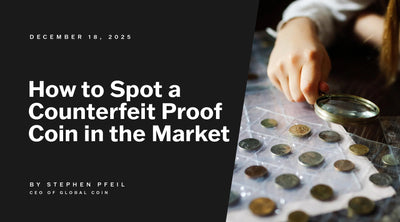
How to Spot a Counterfeit Proof Coin in the Market
How to Spot a Counterfeit Proof Coin in the Market In the world of numismatics, few things hold ...
Discover More
BREAKING NUMISMATIC NEWS: Large batch of 2025 Marine Privy Coins MELTED by U.S. Mint
BREAKING NUMISMATIC NEWS: Large batch of 2025 Marine Privy Coins MELTED by U.S. Mint A historic ...
Discover More
Tax Implications When You Sell Gold Bullion in Different States
Disclaimer: The following content is for informational purposes only and should not be construed ...
Discover More

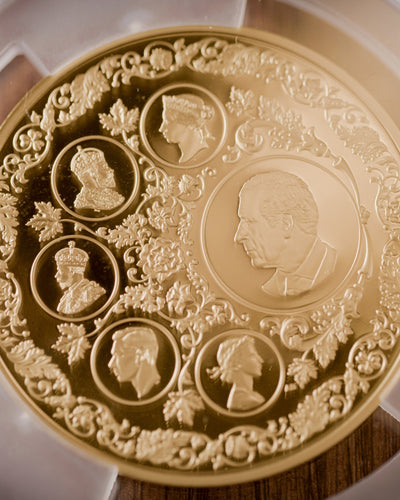
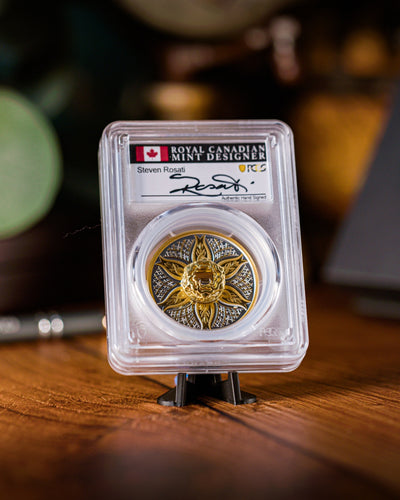
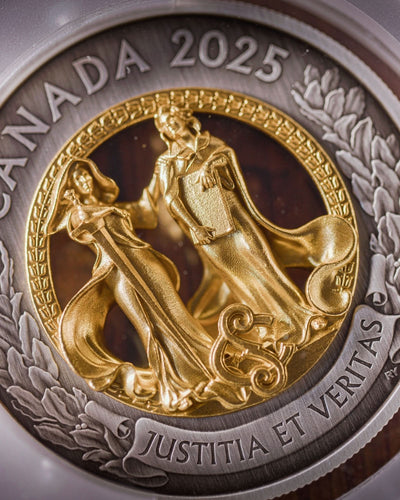
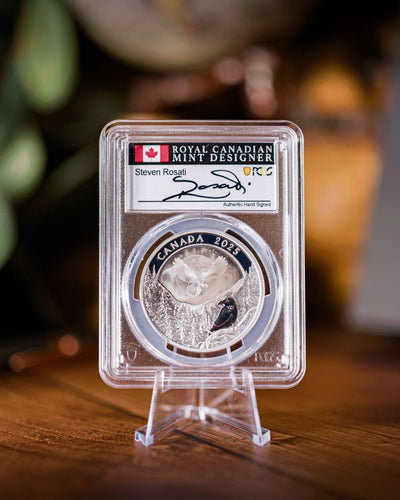
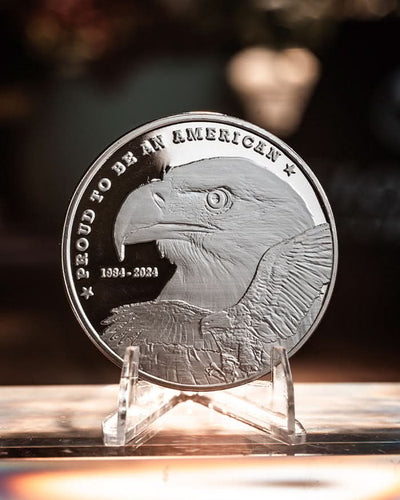
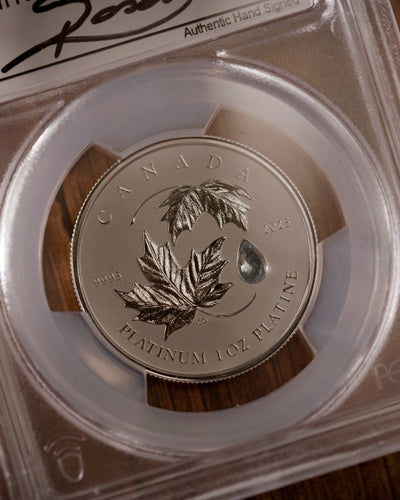
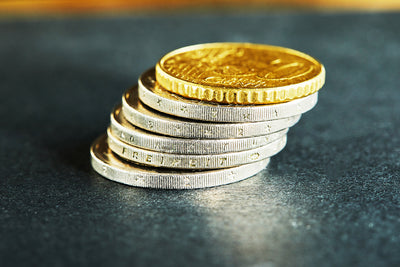
Leave a comment
This site is protected by hCaptcha and the hCaptcha Privacy Policy and Terms of Service apply.